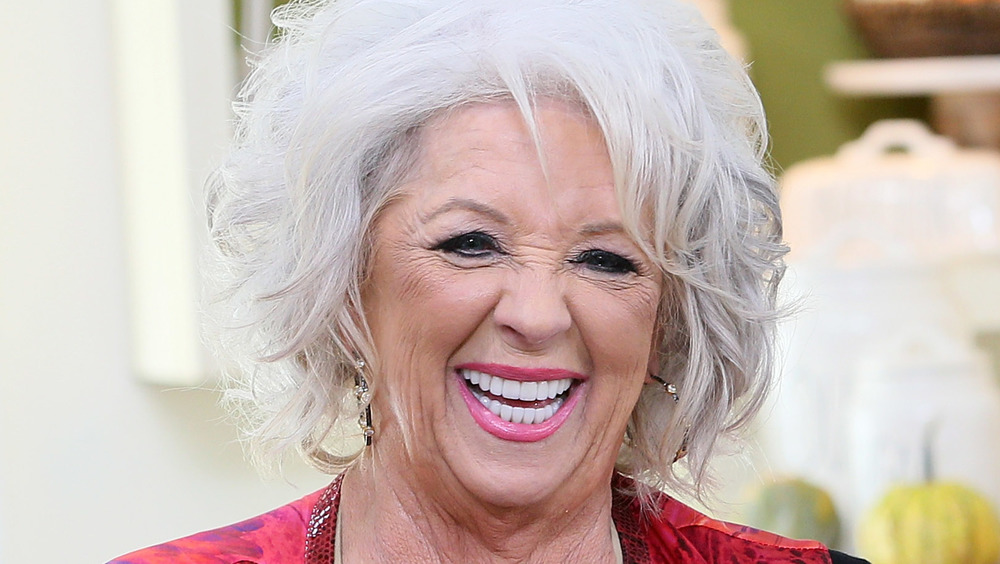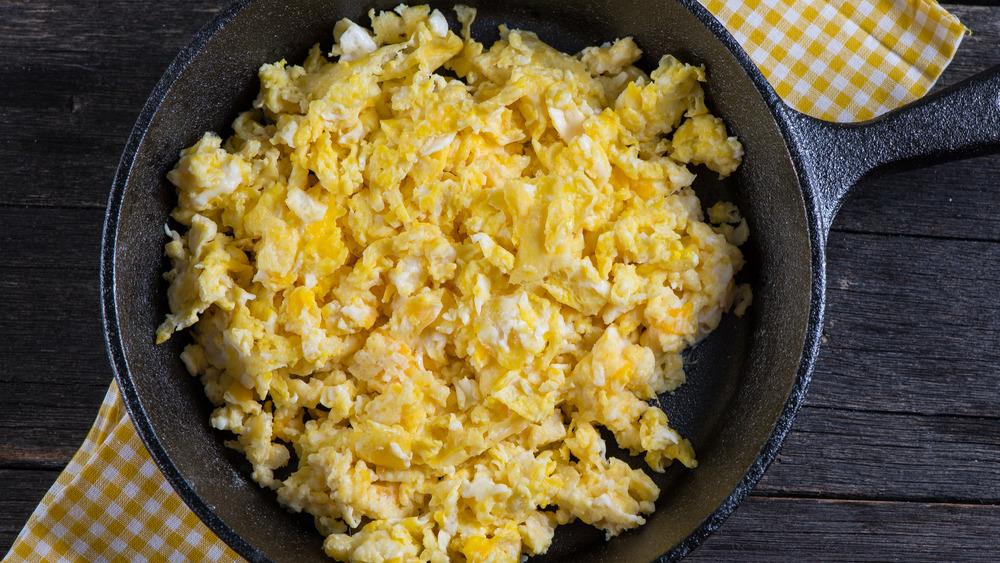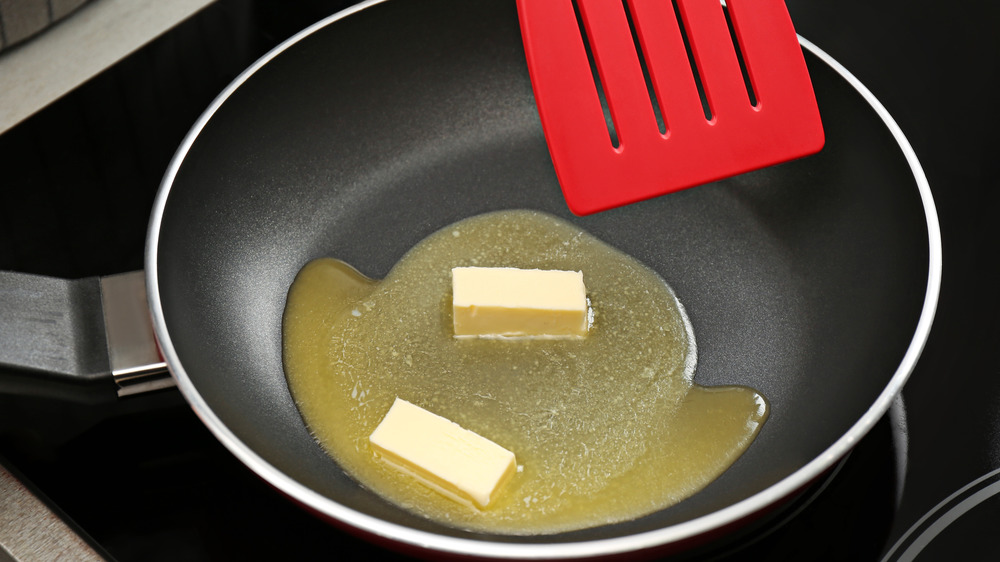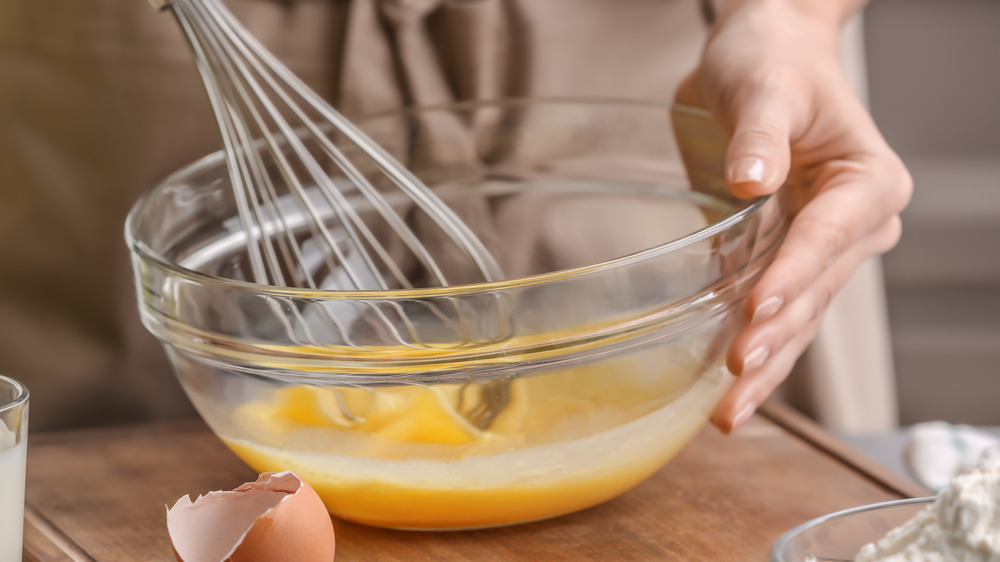The Secret Ingredient In Paula Deen's Scrambled Eggs Changes Everything
When it comes to making scrambled eggs, it seems that everyone has their own methods and preferences. Some like them runny, some like them crispy. Some say you have to move them around the pan constantly while others say it's best to leave them alone as much as possible. Some scramble them in oil, some scramble them in butter. Some add in milk while others — the purists — stick to just eggs and a touch of salt and pepper.
Even celebrity chefs have their own scrambled egg-making secrets. Gordon Ramsay, for instance, recommends adding a splash of crème fraiche and fresh chives. Katie Lee insists it's all about how you cook them (low and slow). The Pioneer Woman Ree Drummond actually strains the eggs through a sieve before she scrambles them. Paula Deen, like her famous culinary colleagues, also has a trick for the best scrambled eggs. Here's what the Southern chef swears by for her morning meal.
Paula Deen recommends adding sour cream
Paula Deen's recipe for classic scrambled eggs (titled "The Lady's Perfect Scrambled Eggs") calls for sour cream rather than milk (via Deen's website). Paula beats the sour cream in with eggs, water, and salt and pepper before pouring them into the pan to scramble. According to people who have tried it (like reviewers on DC Urban Mom), the sour cream makes the eggs fluffier and creamier than milk does. They add that it does however make the scrambled eggs a little wetter, so if you're someone who prefers them dry and crispy, this might not be your cup of tea (or pan of eggs, rather).
One Pinterest commenter who was skeptical of the sour cream hack became a convert after she tested it out for herself. She raved, "They were delicious — super fluffy, creamy and my new [go-to] when making scrambled eggs!" Another said that she'll never go back to another method of cooking them and that her husband can't get enough of them. As for how to best enjoy your eggs? A true Southerner, Paula strongly suggests serving them with country ham and biscuits.
She puts butter and grease in the pan
It's no secret that Paula Deen loves butter. So you won't be surprised to learn that she puts it in her pan before adding her egg mixture when she's scrambling eggs. But you might be surprised to learn that she also adds bacon grease. In an interview with PopSugar, Paula explained, "[I] use half bacon drippings and half butter, so you have the best of both worlds." The fat from both the butter and the bacon grease will be absorbed by the eggs and add so much more flavor than simply spraying your pan with nonstick oil.
Paula uses a ratio of 1:1 for the butter and grease. She also notes that her favorite brand of butter is Kerrygold. To get bacon grease, the next time you make bacon, pour the remaining grease in the pan into a sealable container and store it in the refrigerator or freezer until you're ready to use it. Once the fat is in the pan, Paula also likes to cook her eggs on low to prevent the eggs from frying. In her recipe, she says to cook the eggs over low heat, stirring "occasionally" in a nonstick pan.
Paula Deen adds water instead of milk
While many people whisk milk or half-and-half into their eggs before pouring them into the pan, Paula recommends adding water instead, which she says improves the texture of the eggs. "Water makes them lighter," Paula told PopSugar. "Water doesn't make it as tough as milk." That's because when the water is heated on the stove, it almost steams the eggs, making them fluffier and airier than heavier milk or cream would (via PopSugar). Timing is also of the essence. Paula warns, "If you cook them too fast, it makes them not so good."
Paula isn't the only fan of water, either. There are plenty of home cooks and food bloggers who agree with Paula's anti-milk stance. Don't Waste The Crumbs explains the science behind using water rather than dairy: "The water will evaporate and leave tiny pockets of air. This is what makes the eggs light and fluffy and soft and creamy, all at the same time." Not only that but by swapping water for milk, you'll always have it on hand. No more worrying about your milk spoiling or running out — all you'll have to do is turn on the faucet.



